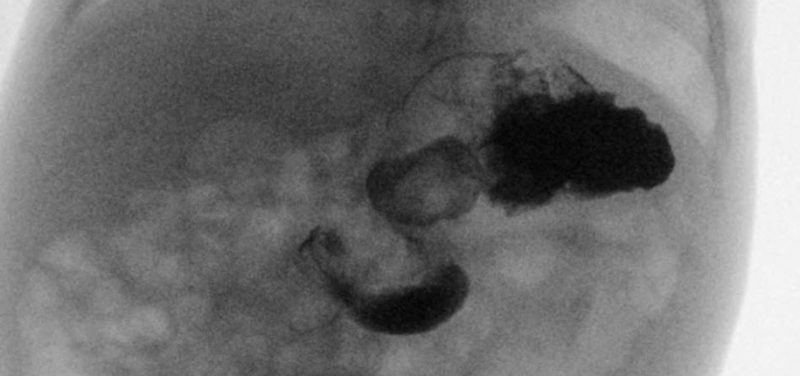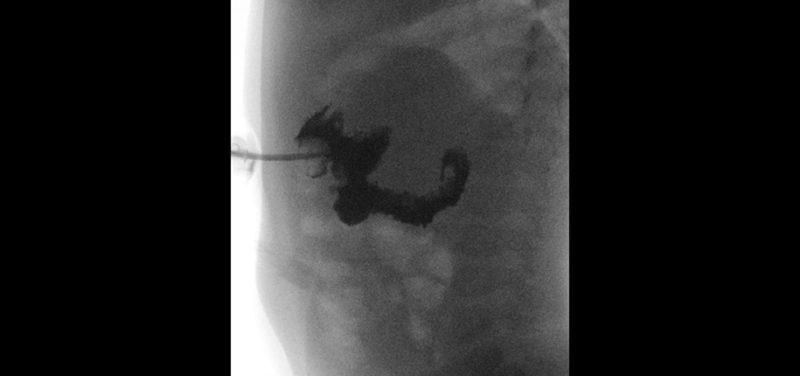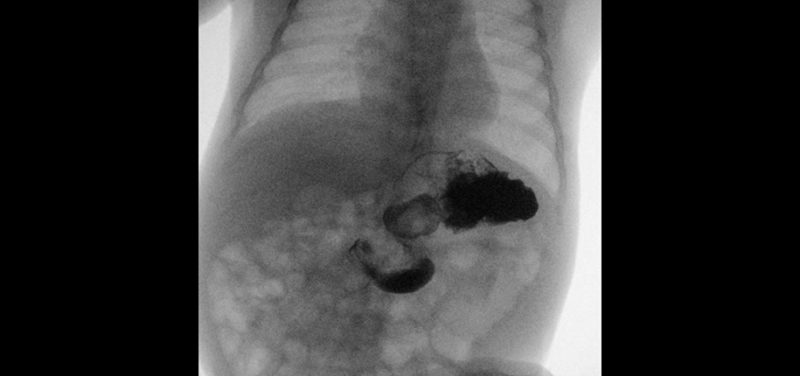
Commonly referred to as malrotation, intestinal malrotation is a condition present at birth. It is caused by abnormal development of the baby’s intestine before he or she is born. While in normal development there is a clockwise rotation of the small intestine, children with malrotation do not undergo this same rotation, causing an abnormal location of the small intestine in the abdomen. Malrotation is ideally recognized in the period immediately after birth, or in infancy, but may be diagnosed later in childhood.

While malrotation may cause problems, it may also cause no problems at all. However, it is important to identify a serious complication of malrotation called volvulus, which may require urgent surgery. If your child presents with abdominal pain or trouble feeding, your doctor may want to make sure that your child does not have a volvulus. A volvulus is caused by the small intestine suddenly twisting tightly on itself.

Your doctor may order a radiology exam called an upper GI series, which can be done to make sure that both malrotation and volvulus are the cause of your child’s symptoms. An upper GI series is carried out by feeding a child a liquid called barium, often through a bottle or sippy cup. The radiologist will then take a series of x-ray images with the child in different positions. X-ray technologists and child life specialists in the Radiology Department will help guide you and your child through the exam in the most comfortable way possible. The radiology doctors will then send the result of this exam to the doctor who ordered it, to allow them to decide the next step in your child’s care.
Contributed by Dr. Brendan McCleary and edited by Michelle Gramke, (ADV TECH_US).
